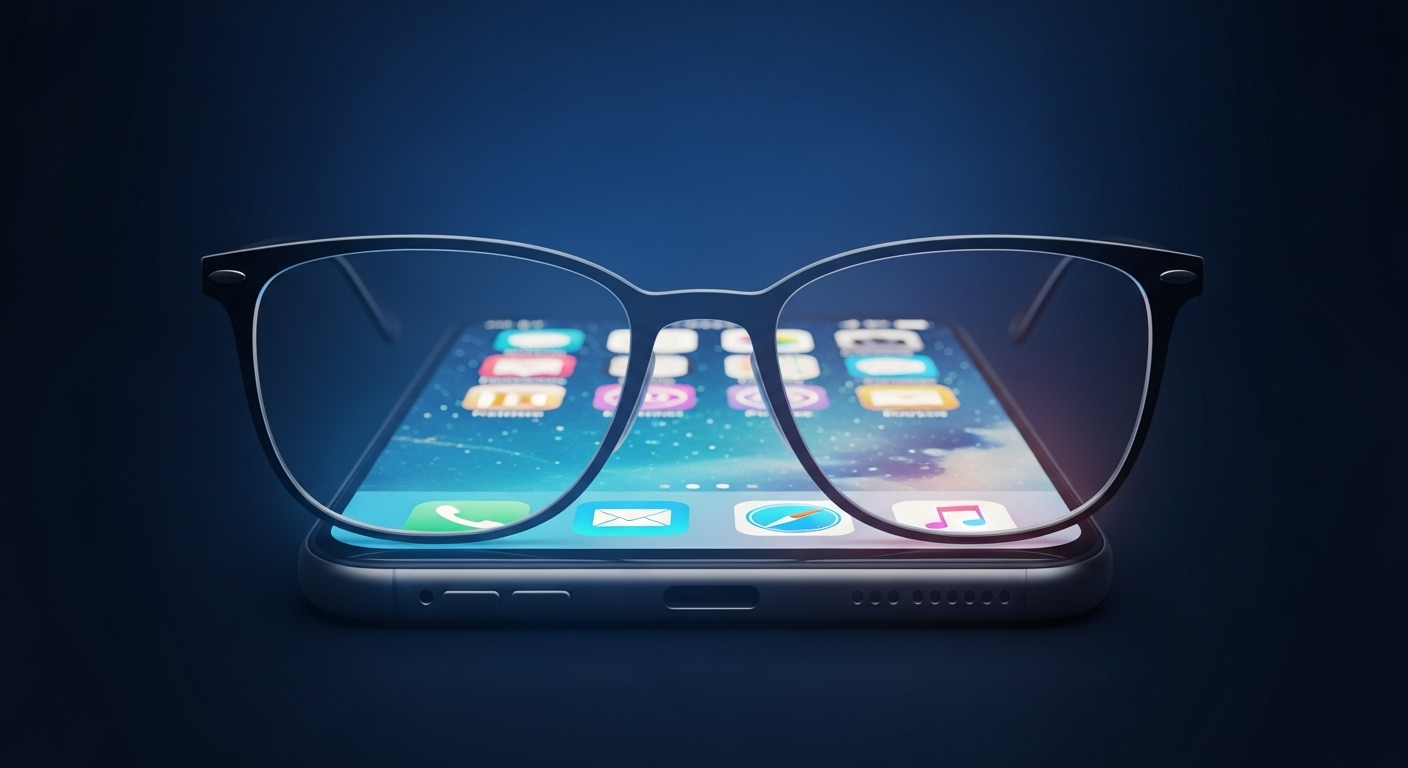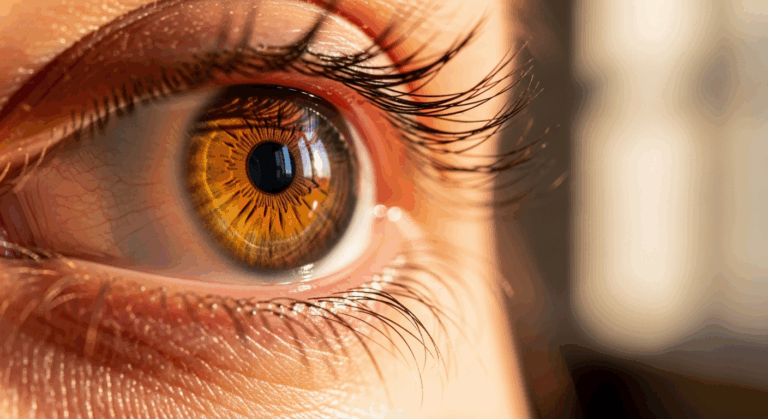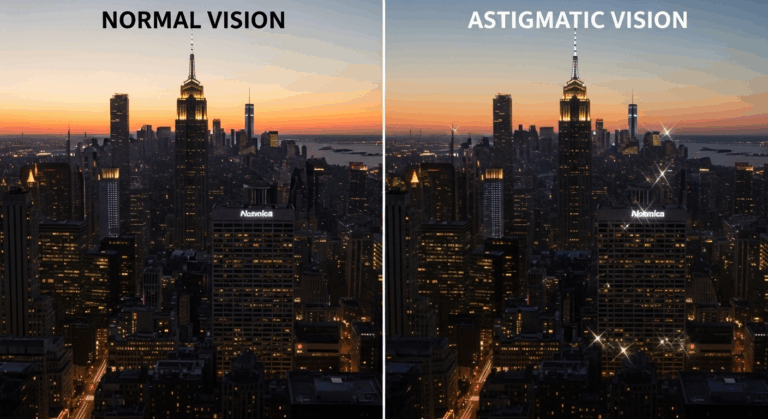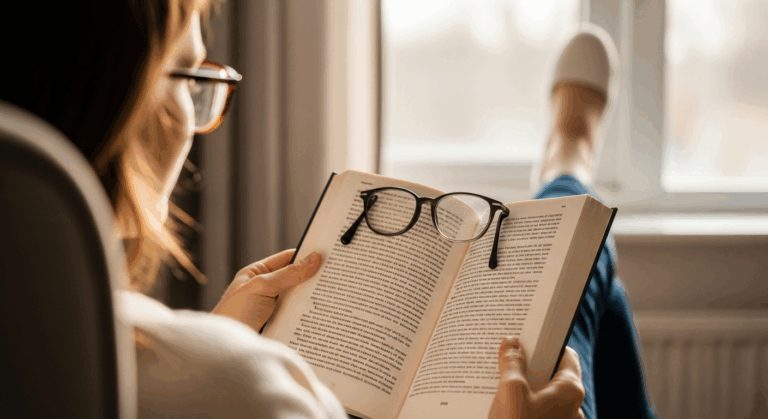You’ve probably seen those sleek blue-light lenses everywhere — influencers, office stores, even your dentist recommending them. But can you wear blue light glasses all day? Short answer: usually yes, it’s safe, but the real question is whether you need to and when they actually help. Below I’ll walk you through the evidence, practical pros and cons, and how to use them like a pro — no tech-bro marketing speak, just straight talk from someone who works with eyes and eyewear every day.
What are blue light glasses?
Blue light glasses are lenses that filter part of the blue portion of visible light (roughly 420–480 nm). Some do it with a coating, others with a slight yellow/orange tint. They’re marketed to reduce digital eye strain, improve sleep, and “protect” your eyes from screen light. Think of them as sunglasses for your screens — but much subtler.
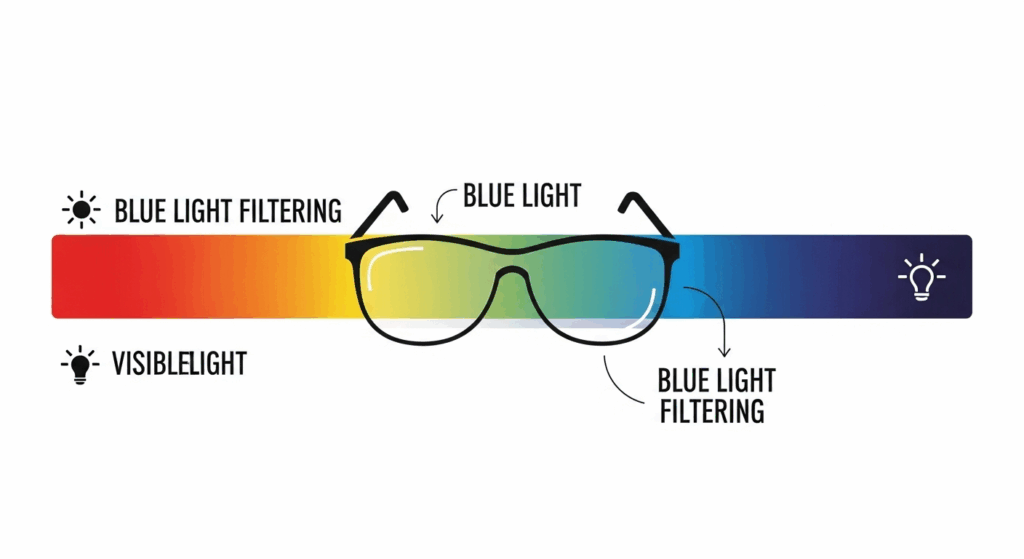
Can you wear blue light glasses all day? (Quick verdict)
Yes — for most people it’s safe to wear them all day. They won’t harm your eyes just by wearing them. But safety isn’t the whole story: effectiveness depends on what you’re trying to fix (eye comfort vs sleep vs light sensitivity), and certain lens tints can change color perception or reduce contrast in low light — which matters for tasks like night driving.
How blue light glasses might help — and when they probably don’t
Digital eye strain — comfort, not a cure
Many people report feeling more comfortable wearing blue-blocking lenses during long screen sessions. That said, the best clinical summaries (systematic reviews) show little to no consistent evidence that these lenses meaningfully reduce symptoms like fatigue, dry eyes, or blurred near vision compared with regular lenses — at least over short follow-ups. In plain English: some folks feel better, but the science hasn’t nailed down a reliable benefit yet.
Sleep & circadian rhythm — timing matters

Blue light suppresses melatonin and influences your circadian rhythm — that’s why screen time right before bed can make it harder to fall asleep. Blocking blue light in the evening (the last 1–3 hours) can help some people fall asleep faster or shift rhythms, especially in people with delayed sleep schedules or certain sleep disorders. But for healthy adults during daytime use, wearing blue-blocking lenses all day won’t meaningfully improve sleep. So if your goal is better sleep, focus on evening use and other sleep hygiene habits.
Long-term eye damage — myth vs reality
There’s a lot of clickbait claiming screen blue light will “damage your retina.” At the light levels screens emit, there’s no good human evidence that everyday device blue light causes retinal disease. Sunlight contains far more blue light than screens; sunglasses and UV protection are still the relevant protection outdoors. Major eye organizations don’t recommend blue-blocking glasses for retinal protection.
Risks and things to watch for if you wear them all day
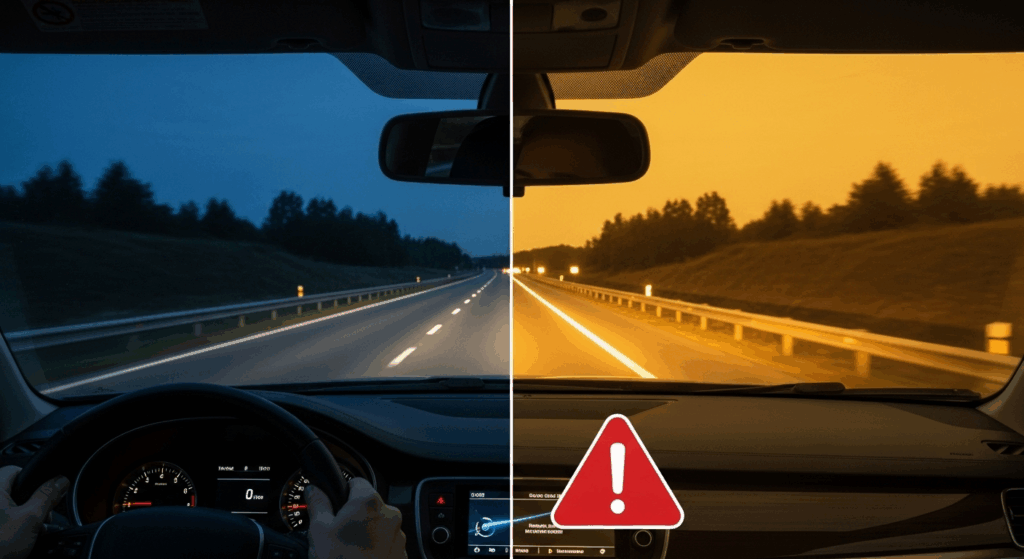
- Color shifts & contrast changes: Heavily tinted lenses (deep yellow/orange) can alter color perception and reduce contrast in low light — that’s not ideal for designers, electricians, pilots, or anyone whose job depends on accurate colors. In low light they can slightly impair performance.
- Night driving caution: Yellow/orange night-driving “blue-blockers” are popular, but some studies suggest they don’t improve—and may slightly worsen—night driving performance because they reduce overall light transmission and contrast. Don’t wear heavily tinted blue-blockers while driving at night.
- Placebo effect is real: If they make you feel better and you don’t have downsides, that’s fine. But don’t rely on them as a sole fix for headaches or serious visual problems without checking with an eye doctor.
Practical tips: How to wear blue light glasses all day (if you choose to)
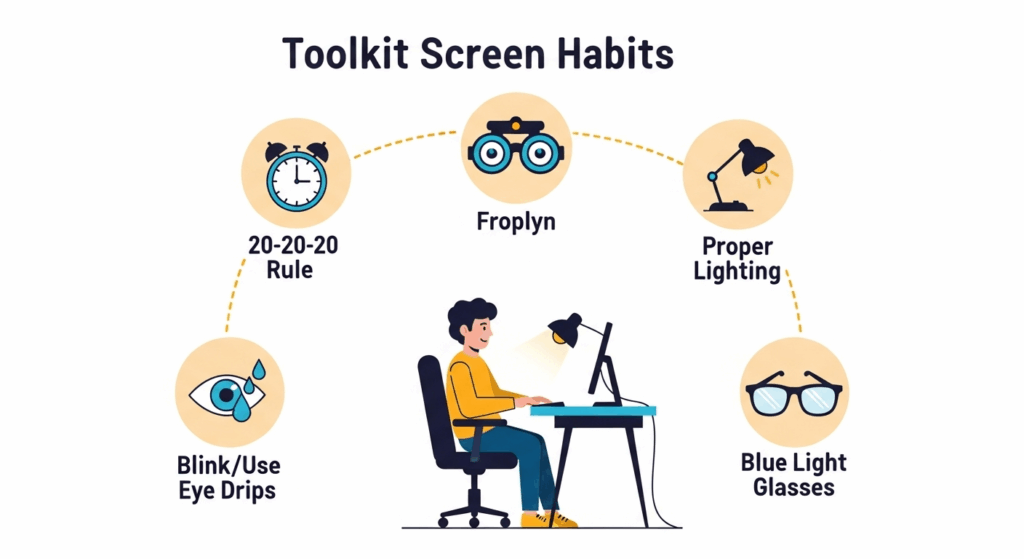
- Match the lens to the job. For all-day office work, low-tint or coating-only lenses keep colors normal and still reduce a portion of blue light. Save orange/red tints for targeted evening use, not daytime tasks.
- Use them with good habits. Blue-light glasses aren’t a magic wand. Combine them with the 20-20-20 rule (every 20 minutes, look 20 feet away for 20 seconds), good lighting, screen brightness matched to the room, and frequent blinking or lubricating drops if your eyes are dry.
- Don’t drive at night in heavy tints. If you need glare reduction for driving, anti-reflective coatings or polarized sunglasses (for daytime) are better choices.
- If you have migraine or photophobia, consider a specialist. Some people with light sensitivity or migraine benefit from specific tints or precision lenses — an optometrist or neuro-ophthalmologist can guide you.
- Check lens quality. Look for reputable manufacturers and ask whether the blue-light filtering is via coating or tint; coatings can block blue wavelengths while keeping color perception closer to normal.
Who might actually benefit from wearing them all day?
- People who spend nearly all day on screens and find they feel less tired wearing them (comfort-driven usage).
- Those with light sensitivity or certain neurological conditions (migraine, photophobia) — under clinician guidance, a specific tint can help.
- Shift workers who want to control circadian cues: wearing blue blockers during daytime sleep or at planned times can be part of a broader strategy.
Who probably shouldn’t wear them all day?
- Color-critical professionals (graphic designers, lab techs, electricians).
- Drivers at night — avoid heavy tints that reduce visibility.
Conclusion
Wearing blue light glasses all day is generally safe, and some people find them comfortable during long screen sessions. But the clinical evidence for reducing digital eye strain is limited, and the strongest, most reproducible benefit is for evening wear to protect sleep. Think of blue light glasses like an accessory in your eye-care toolbox — helpful for some jobs and some people, but not a universal fix. If you have persistent symptoms (vision changes, severe headaches, or sleep disorders), see an eye care professional rather than relying only on glasses.
